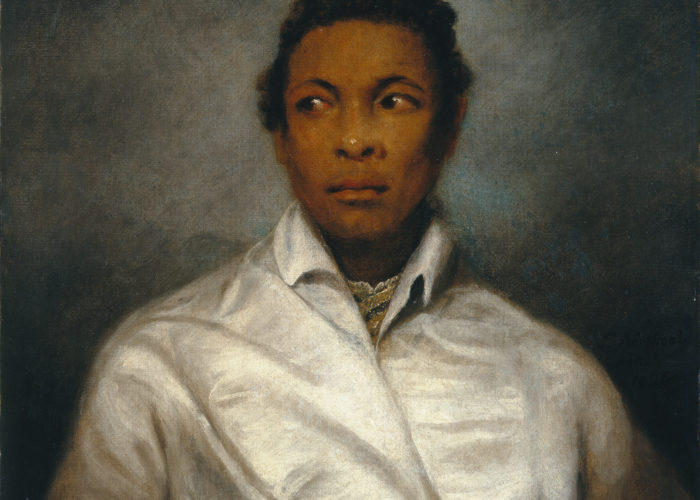Ira Aldridge as Othello, the Moor of Venice
Theme: The arts in the Age of Revolution, Challenging slavery: abolition and opposition
Ira Aldridge (1807 – 1867) was the first Black actor to play leading Shakespearian roles on the stage, both in Britain and across Europe.
Ira Aldridge was born in New York City to a free Black reverend, and educated at a school founded by the New York Manumission Society (supporting the freeing of enslaved people). As a young man, he moved to England hoping there would be more opportunities for him to become a great Shakespearian actor. He worked in theatres in Britain and Ireland, developing his skills as both an actor and a theatre manager.
In 1833, he made his West End debut at Covent Garden Theatre in London. For two nights he starred in the lead role of Shakespeare’s play Othello. He was a huge hit with audiences, but some newspaper critics wrote racist reviews about him. Fearful of a racist backlash, the theatre cancelled his contract. He was never allowed on stage at Covent Garden again.
Aldridge returned to the theatre circuit away from London, touring Britain and Europe. He became very successful and was awarded prestigious medals for his artistic achievement by Prussia, Russia and Switzerland.
Aldridge’s acting career took off at the height of the movement to abolish slavery. He chose to play a number of anti-slavery roles and often addressed his audiences on closing night, speaking passionately about the injustice of slavery, as did other touring Black abolitionists such as Frederick Douglass.
In 1855, Aldridge’s reputation as an acclaimed actor led to his triumphant return to the London stage. He died on tour in Poland, having become one of the highest paid actors in the world.
This portrait shows Aldridge as Othello – his most famous role. The painting was considered the ‘best executed’ work in the 1826 exhibition of the Royal Manchester Institution.
Did you know..?
Two of Aldridge’s daughters, Irene and Amanda, became opera singers.
Use our Classroom resources to investigate this portrait and the theme of Abolition further.
Highlights:
- Using objects, artworks and other sources to find out about the past
- Enquiry: Abolition of the Transatlantic Slave Trade
And much more…
Sources & acknowledgements
This object description and its related educational resources were researched and written by our team of historians and education specialists. For further information see the item’s home museum, gallery or archive, listed above.
- Related resources
-
Did you know..?
Two of Aldridge’s daughters, Irene and Amanda, became opera singers.
-
Education overview
You can access a range of teachers resources related to this object and more on our education page.
Please also see our glossary of terms for more detailed explanations of the terms used.
-
Curatorial info
- Originating Museum: Manchester Art Gallery
- Accession Number: 1882.2
- Production Date: 1826
- Creator: James Northcote
- Material: Oil, canvas
- Size: Canvas: 76.2cm X 63.5cm
- Original record
-
Use this image
You can download this image for personal and educational use but please take note of the license type and rights holder information.
- Rights Holder: Manchester Art Gallery
- License Type: All Rights Reserved



